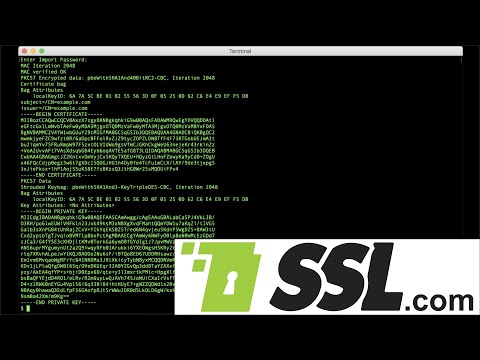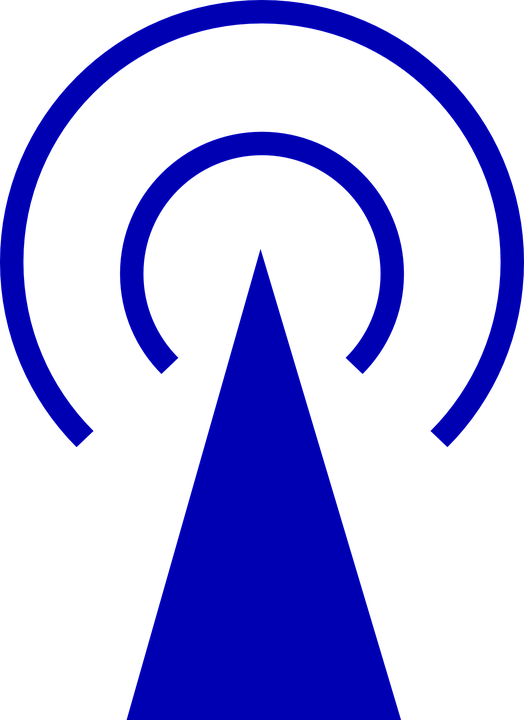
Adjusting the settings of Apache web server can improve its performance. Some of these settings include the MaxRequestWorkers directive, SymLinksIfOwnerMatch, and MinSpareServers. These settings can be adjusted to increase the speed of your website.
KeepAlive directive
Apache's KeepAlive directive limits the number of requests it will accept per persistent connection. Typically, it should be limited to 100 but can be adjusted to accommodate larger traffic volumes. The KeepAlive directive also controls the MaxKeepAliveRequests parameter, which specifies the maximum number of connections allowed per persistent connection. MaxKeepAliveRequests should be set higher to prevent overloading dedicated servers.
MaxRequestWorkers
Apache's MaxRequestWorkers directive sets a limit on the number of concurrent connections that it can handle. This directive is used by Apache to limit the Apache server's use of all resources. Too low a value can cause the server to thrash and result in loss of data, while too high a value can cause the server to crash.

SymLinksIfOwnerMatch
A bug in Apache allows malicious users to modify symlinks multiple time. This is known to be a "race situation." If an attacker modifies a Symlink multiple times, it is possible to inject malicious content in the user-owned files. A workaround is to disable SymLinksIfOwnerMatched in Apache's config.
MinSpareServers
Apache can handle many requests. Therefore, it is important to set Apache up for a limited number of child processes. MinSpareServers and MaxSpareServers are two configurations you can adjust in the Apache conf file. Both control the number of child processes that the parent process will start during startup. Ideal is for these settings be similar to or equal the MaxClients.
Expires
The Expires headers speed up web page loading and protect against outdated content. These headers are used to reduce the number HTTP requests to the website server. This header makes it easier for your website to load and is especially useful when you have complex web pages. The Expires headers enable your browser to cache certain files on a webpage instead of downloading them.
Etag
An ETag is a code piece that uniquely identifies a webpage. An ETag can be as simple as an MD5 hash, or it can include additional attributes. Apache generates ETags for files based upon the file's ID number, its modified date, and its total size. The ETags are saved in the header of each response.

Cache-Control headers
Cache-control headers are HTTP headers that define caching policies for browsers. They define the cache-control headers that control the storage location and how long resources can be stored. They can also indicate the maximum age at which a resource will expire. An Expire header indicates a date at which the resource should cease to be valid. A browser will then need to re-cache that resource. Most webmasters recommend that you use cache-control headers. They allow for advanced caching policies.
Memory usage-limiting modules
Apache's memory usage-limiting modules allow you to limit how much memory a process can use. A number of factors can limit a process, such as its overall size, unshared and shared memory, and concurrent requests. These limitations may be applied to parent and child processes.
FAQ
Do I choose WordPress or a web builder?
It is best to start small in order to establish a web presence. If you have the time and resources to build a full-blown site, then do so. You might start with a simple blog if you don’t have the time or resources. As you become proficient in web design and development, you can add features as needed.
It is essential that you have a primary domain name before you can start your first website. This will give you something to point to when you publish content.
What Websites should I make?
This question is dependent on your goals. It may be best to sell online your products to build a company around your website. This can only be achieved by building a solid eCommerce website.
Blogs, portfolios and forums are all popular websites. Each of these requires different skills and tools. For instance, if you want to set up a blog, you will need to learn about blogging platforms such as WordPress or Blogger.
It is important to choose the right platform for your site. There are many templates and themes that are free for each platform.
Once you have decided on a platform, you are able to start building your website by adding content. Pages can include images, videos, text and links.
You can publish your website online once you have launched it. Once your website is published, visitors will be able to access it in their web browsers.
How do I design a website.
It is important to first understand your customers and what your website should do for them. What do they look for on your site?
What issues might they be facing if they can't locate what they're looking at on your site.
After you have this information, you need to find out how to solve the problem. Also, you need to ensure that your website looks professional. It should be easy to use and navigate.
You should have a well-designed website. Make sure that it doesn't take too long to load. If it does take too long, people won't stay as long as they would like to. They will move on to something else.
It is essential to determine where all your products reside before you start building an eCommerce website. Are they all in one location? Are they scattered about your site?
You need to decide whether you want to sell one product at once or many different types of products. Do you want to sell just one type of product or multiple kinds?
When you answer these questions, your site can be built.
Now, it's time to take care of the technical aspects. How will your website work? Is your site fast enough to be useful? Is it possible to access the information quickly using a computer?
Can people buy things without having to pay more? Do they need to register with you before they can purchase anything?
These are vital questions you need to ask. These questions will help you to make the right decisions and move forward.
Where can I locate freelance web developers
There are many places you can find freelance web designers or developers. These are some of the best choices:
Freelance Jobs
These sites provide job listings for freelance professionals. Some sites require specific skills, while others may not care about the type of work that you do.
Elance is a great place to find graphic designers, programmers and translators.
oDesk features similar to oDesk, but they are focused on software development. You can apply for jobs in PHP, Perl Java, Java, C++ Python, JavaScript Ruby, iOS and.NET developers.
Another great option is oWOW. Their site focuses primarily on web designers and graphic design. They offer many services, including video editing, programming, SEO, and social media marketing.
Online forums
Many forums let members advertise and post jobs. DeviantArt is an example of a forum that's dedicated to web developers. Searching "web developer", in the search bar will bring up a list with threads that are looking for help with websites.
What is responsive web design?
Responsive Web Design, also known as RWD, is a way of designing websites so that content displays on all devices. This includes desktop computers, tablets (tablets), smartphones, etc. This allows users to simultaneously view a website from one device while still being able to access other features, such as navigation menus and buttons. RWD is designed to ensure that a user can view a site on any size screen.
Consider, for instance, that you're building a website for an eCommerce company and your products are sold primarily online. It is important to ensure that your website can be accessed on any device, including a smartphone.
A responsive site will adapt to the device used to view it. So, viewing the site on your laptop will look like a standard desktop website. However, if you're viewing the page on your phone, it will display differently.
This allows you to create one website that works on all devices.
Is it more likely to be hired as a web developer if I have a good portfolio?
Yes. A portfolio is essential when landing a web designer or developer job. Portfolios should showcase examples of your skillsets and experience.
Portfolios are usually made up of examples of past projects. These examples can showcase your abilities. Portfolios should contain everything, from wireframes, mockups, logos and brochures to websites, apps, and websites.
Statistics
- It's estimated that in 2022, over 2.14 billion people will purchase goods and services online. (wix.com)
- Studies show that 77% of satisfied customers will recommend your business or service to a friend after having a positive experience. (wix.com)
- The average website user will read about 20% of the text on any given page, so it's crucial to entice them with an appropriate vibe. (websitebuilderexpert.com)
- At this point, it's important to note that just because a web trend is current, it doesn't mean it's necessarily right for you.48% of people cite design as the most important factor of a website, (websitebuilderexpert.com)
- It enables you to sell your music directly on your website and keep 100% of the profits. (wix.com)
External Links
How To
Drupal 7 Web Design: How to use it
Drupal is the most used Content Management System (CMS) of today. It was developed back in 2003 by Dries Buytaert from Belgium. The name derives its name from Dirk Buijtewaard's and Pierre d'Herbemont's initial letters. In 2005, Drupal became open source, and since then, there are many versions of this CMS. Drupal is widely used today by companies and websites around the globe.
There are several reasons why Drupal is so popular among website owners. It is easy to download and install. It's also very easy to customize it and extend it. It is well-documented. Fourth, it provides great support through forums and IRC channels. Fifth, it can be expanded via modules. Sixth it supports multiple languages. It is also easily customizable. Eighth, it can be scaled. It is secure. Tenth, it's reliable. Finally, Drupal is supported by the entire community. Drupal is a good choice for your next project due to all of these factors.
You might wonder what makes Drupal stand out from other CMS platforms. It's easy. Drupal is an open source content management system. Drupal is free and open-source content management system. Drupal gives you total control over your website. You can edit your website, add pages or delete them, and change the colors, fonts, images and videos.
Drupal is an option for those who lack the technical skills required to create websites. You don't need programming knowledge to create your website. Learn how Drupal works. You will then be able modify your website to suit your needs.
Another benefit of using Drupal is its many pre-built themes and plugins. These plugins help you to enhance your site's functionality. You can use the Contact Form module, for example, to collect visitor contact information. Google Maps can be used to display maps on your site. Drupal includes thousands of premade templates. And these templates give your website a professional look.
Moreover, Drupal is highly flexible. You can add new modules and even replace existing ones without worrying about compatibility issues. If you are looking to integrate social networks into your website, this is possible quickly. You can also set RSS feeds up, subscribe to e-mails, and many other things.
Drupal can also be customized. Drupal offers many options for customization, including the ability to create custom fields or forms and manage users. Drupal is capable of creating complex layouts.
Drupal is stable and reliable. It is stable and can scale. Also, it offers excellent security features. Drupal is a solid web development platform.